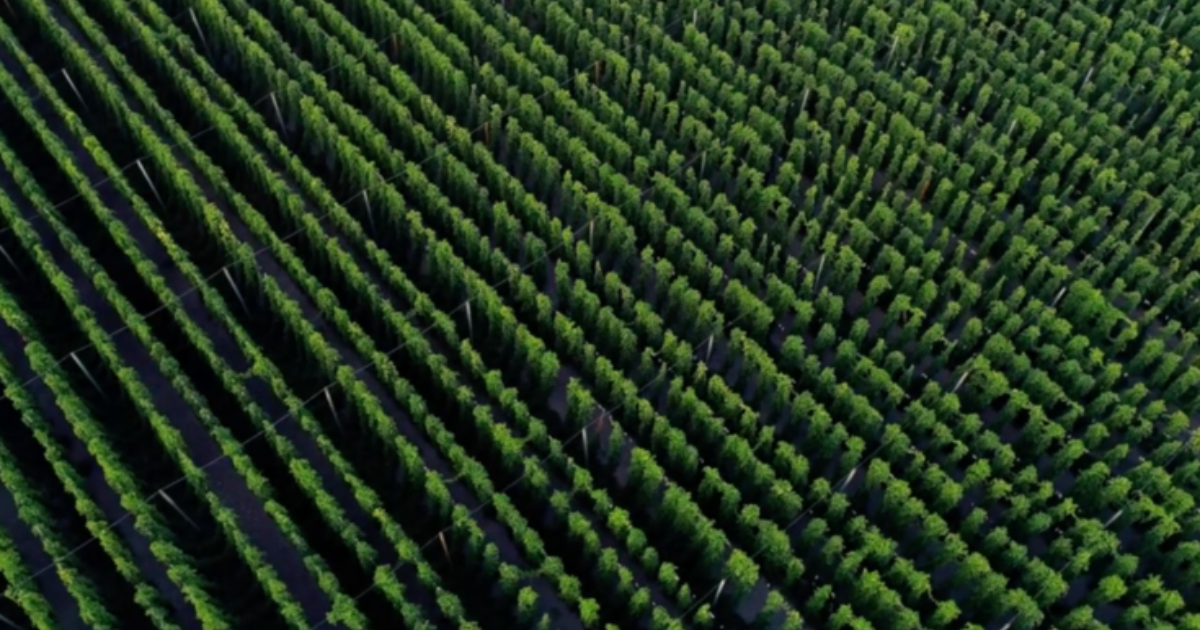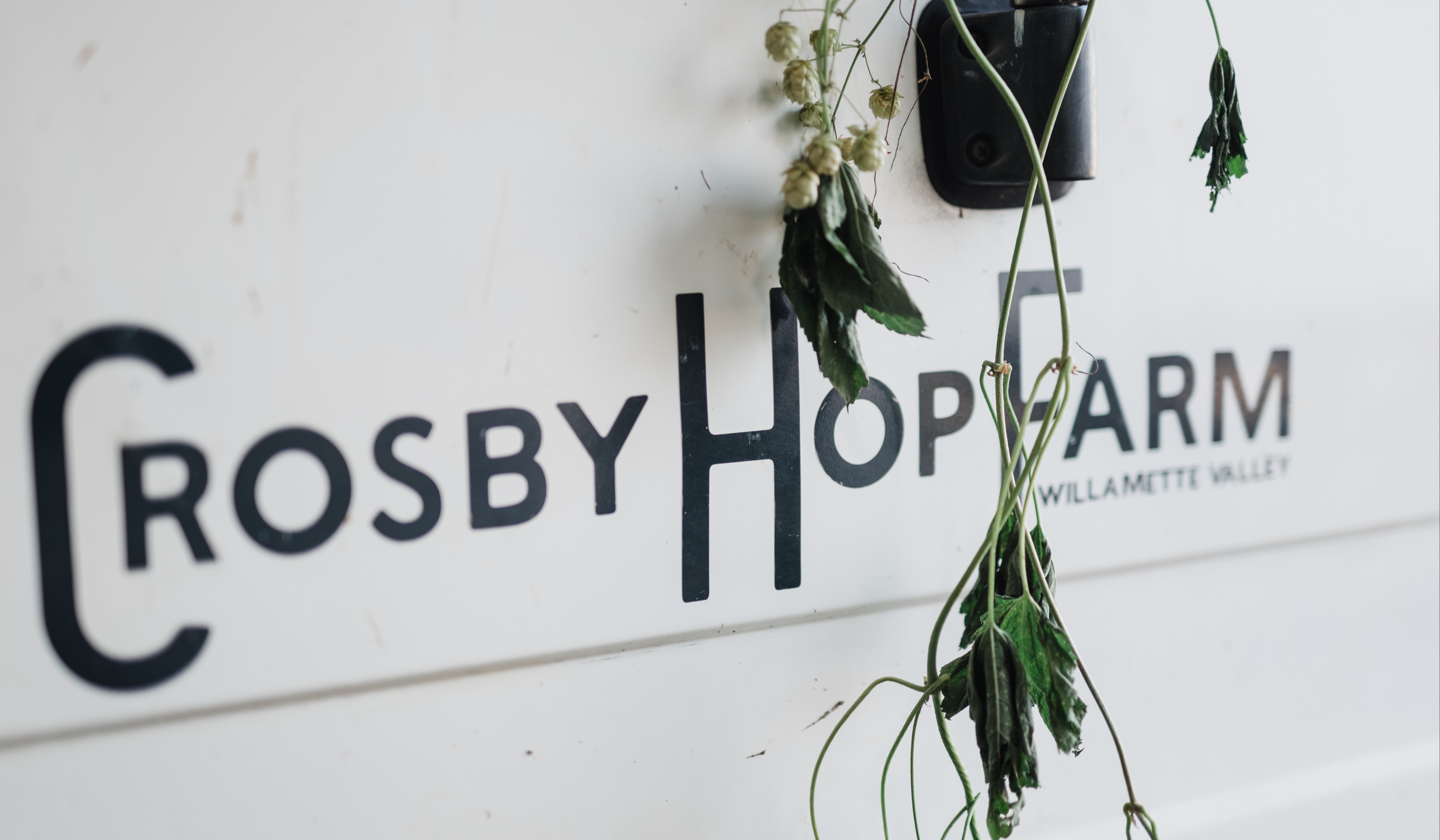What Brewers Need to Know from the 2024 U.S. Hop Report
The hop industry, like the craft beer market it supports, is in constant evolution. Each year brings new challenges, trends, and opportunities for farmers, brewers, and everyone adjacent. The USDA’s 2024 National Hop Report offers a snapshot of where the industry stands today and, perhaps more importantly, where it’s headed. With production down and acreage reduced, this year’s report signals it will take additional time for supply to meet demand, as lower consumption levels likely prevented significant reductions in the current industry surplus.
Additionally, beneath the numbers lie structural shifts that could have implications for brewers. The data shows that the Yakima Valley now amasses 75% of all U.S. hop acreage, the domestic hop crop is increasingly controlled by private breeding programs, and there are endangered varieties from the dramatic acreage reductions.
Market Recalibration
Total U.S. hop production fell 16%, from 104 million pounds in 2023 to 87.1 million pounds in 2024. Further significant production cuts are expected in 2025, as the U.S hop industry works toward achieving a supply-demand balance resulting from multiple years of inventory carry over.


State Snapshots
Washington: 33,361 acres (74.5% of total acreage)As the nation’s largest hop producer, Washington harvested 33,361 acres, producing 64.1 million pounds of hops. Varieties like Citra® HBC 394 and Mosaic® HBC 369 remain dominant and drive much of the U.S hop surplus. Washington's total acreage is nearly three times that of the combined acreage of Oregon and Idaho, underscoring the acreage concentration in the Yakima Valley.
Idaho: 5,797 acres (12.9% of total acreage)
Idaho experienced the steepest percentage decline, with acreage dropping 34% to 5,797 in 2024. Despite these reductions, Idaho remains an important contributor to the U.S. hop market, particularly for alpha varieties, which account for an estimated 65% of its acreage.
Oregon: 5,635 acres (12.6% of total acreage)
Oregon harvested 5,635 acres in 2024, yielding 9.8 million pounds of hops. Known for its focus on aroma hops, an estimated 85% of Oregon’s hop acreage is dedicated to these varieties, underscoring its role in providing the nuanced flavors and aromas sought by craft brewers.


Varietal Trends
The rise and fall of hop varieties reflect shifting brewing trends, as brewers adjust to consumer preferences for beer styles and flavors. The 2024 report highlights several key varietal trends worth noting:
- Citra® HBC 394 and Mosaic® HBC 369 both saw additional acreage reductions as supply for these varieties continues to exceed demand.
- Cascade and Centennial, once staples of the craft beer boom, continue to be highly valued for their quality and versatility. While acreage for both varieties has seen a reduction, their enduring presence highlights their ongoing relevance in brewing.
- Strata® OR 91331, an Indie Hops variety, maintained relatively stable production levels in 2024, due to increased yields per acre, despite a significant reduction in acreage.
- Simcoe® YCR 14 and Amarillo® VGXP01 have seen a reduction in acreage reflecting the evolving trends.
- Organic Varieties: Organic hop production saw an overall acreage reduction, dropping to 482 acres from 634 in 2023. Despite these challenges, organic hops remain crucial for brewers committed to organic certifications.
Pricing and Margin Pressure
The report reveals a downward trend in the average price per pound of hops across the United States.
- Washington has seen a significant decline in price per pound over the three-year period, with an overall reduction of 17.3%. The steepest drop occurred between 2022 and 2023, with a 12.4% decrease per pound, followed by a smaller decline of 5.6% between 2023 and 2024.
- Idaho experienced a total reduction in average price per pound of 14.75% between 2022 to 2024.
- Oregon had the most modest average price per pound decrease of 8.6% between 2022 and 2024.
Combined, the average price per pound across the United States has decreased 16.1% since 2022.
The average price per pound of hops across all major production states in 2024 often falls below breakeven costs, indicating an average performing farm would be operating at a loss. This misalignment between production costs and market returns underscores significant economic challenges for the industry.

Yield Analysis
From 2022 to 2024, yield per acre across the top hop-producing states varied significantly, reflecting diverse growing conditions and operational efficiencies.
- Washington's yield increased from 1,679 pounds per acre in 2022 to a peak of 1,971 in 2023, before slightly declining to 1,922 in 2024.
- Idaho showed the most substantial growth, with yields rising steadily from 1,733 in 2022 to an impressive 2,273 in 2024, reflecting a 31% increase over two years.
- Oregon experienced more variability, with yields dipping from 1,729 in 2022 to 1,558 in 2023, but rebounding to 1,732 in 2024, maintaining overall stability across the period. Interestingly, Oregon had the highest Citra® yield at 1,698 compared to Washington’s 1,573 and Idaho’s 1,579. Additionally, Strata ® yields were up 21% year over year in Oregon.
Endangered Varieties List
Based on the report, several hop varieties have experienced significant acreage declines over recent years, indicating they may be at risk.
- Cashmere: Acreage dropped to 140 acres in 2024, down from 349 acres in 2023, a decline of nearly 60% over two years.
- Comet: Acreage fell to 159 acres in 2024, down from 437 acres in 2023, a decline of approximately 64% in two years.
- Mt. Hood: Disappeared from reported acreage in Washington and is now down to just 142 acres in Oregon.
- Mt. Rainier: Similar to Mt. Hood, this variety has dropped off acreage reports in Washington and is nearing obsolescence.
- Sabro ®: Acreage reduction of 69% since 2022.
- Talus®: Dropped approximately 78% from 2022-2024.
- Triumph, Zappa ™, Ahtanum ®: Did not report any acreage for the second consecutive year in 2024.

Structural Changes
Acreage Reductions Lead to Increased Industry Concentrations
The U.S. harvested 44,793 acres of hops in 2024, an 18% decline from the previous year. With 75% of U.S. hop acreage now located in the Yakima Valley, up 3% since 2022, the industry is increasingly reliant on this single region. Disruptions in climate, natural disasters, water availability, or workforce could pose a major industry threat.
Proprietary Domination
Privately controlled varieties now account for 65% of total U.S. hop acreage, with public varieties shrinking to 35%. In the aroma hop market, the disparity is even greater, with 70% of acreage privately controlled.

Creating a Sustainable Path Forward
The declines in production and acreage may seem alarming, but they reflect an industry seeking balance after years of rapid growth followed by contraction. However, these corrections must not give rise to new challenges of market concentration.
To ensure a resilient and diverse industry, brewers and farmers must champion diversity—across varieties, regions, and suppliers—to safeguard the competitive dynamics that foster innovation and sustainability. The road ahead is about more than just meeting demand—it’s about protecting the health of an industry that fuels the creativity of brewers and the enjoyment of beer lovers worldwide.
As brewers plan for their forecasting needs in 2025 and beyond, it’s vital to make purchasing decisions with a broad perspective on diverse sourcing and supporting a range of hop varieties. Now is the time to take proactive steps to secure a resilient hop supply that supports long-term success.













